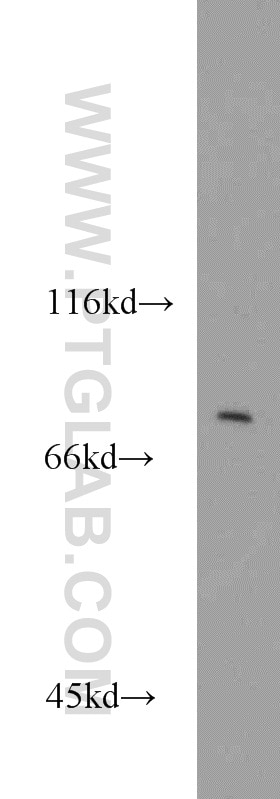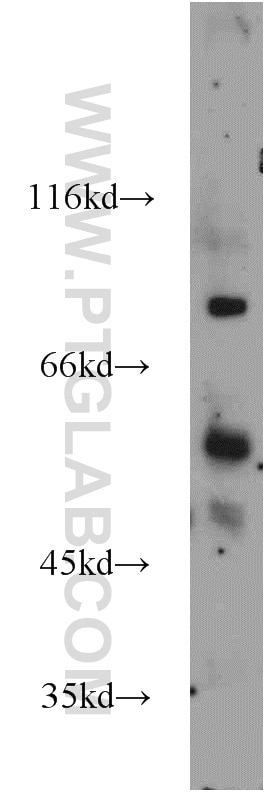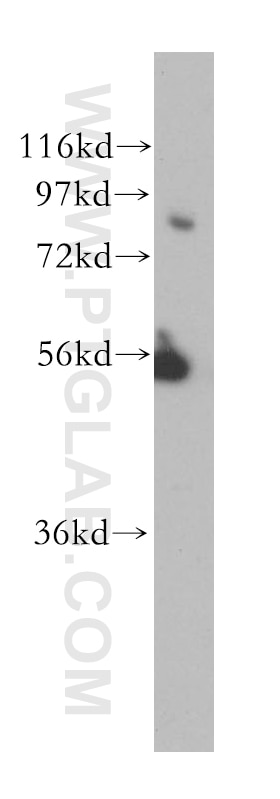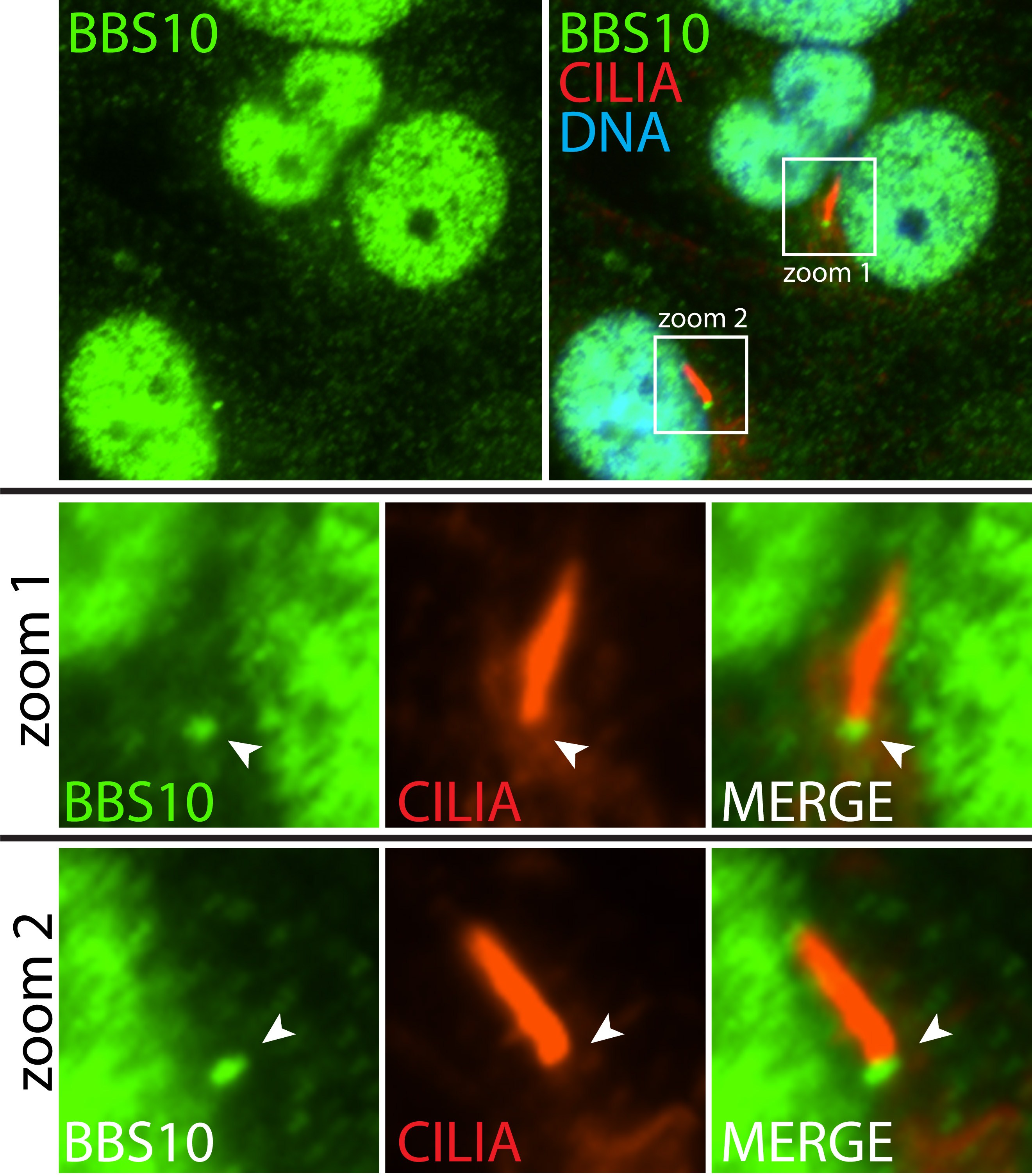- Phare
- Validé par KD/KO
Anticorps Polyclonal de lapin anti-BBS10
BBS10 Polyclonal Antibody for WB, IF, ELISA
Hôte / Isotype
Lapin / IgG
Réactivité testée
Humain et plus (1)
Applications
WB, IF/ICC, ELISA
Conjugaison
Non conjugué
N° de cat : 12421-2-AP
Synonymes
Galerie de données de validation
Applications testées
| Résultats positifs en WB | cellules HepG2, cellules A549, cellules MCF-7 |
| Résultats positifs en IF/ICC | cellules hTERT-RPE1 |
Dilution recommandée
| Application | Dilution |
|---|---|
| Western Blot (WB) | WB : 1:500-1:1000 |
| Immunofluorescence (IF)/ICC | IF/ICC : 1:20-1:200 |
| It is recommended that this reagent should be titrated in each testing system to obtain optimal results. | |
| Sample-dependent, check data in validation data gallery | |
Applications publiées
| KD/KO | See 2 publications below |
| WB | See 3 publications below |
| IF | See 2 publications below |
Informations sur le produit
12421-2-AP cible BBS10 dans les applications de WB, IF/ICC, ELISA et montre une réactivité avec des échantillons Humain
| Réactivité | Humain |
| Réactivité citée | Humain, souris |
| Hôte / Isotype | Lapin / IgG |
| Clonalité | Polyclonal |
| Type | Anticorps |
| Immunogène | BBS10 Protéine recombinante Ag3073 |
| Nom complet | Bardet-Biedl syndrome 10 |
| Masse moléculaire calculée | 81 kDa |
| Poids moléculaire observé | 81 kDa |
| Numéro d’acquisition GenBank | BC013795 |
| Symbole du gène | BBS10 |
| Identification du gène (NCBI) | 79738 |
| Conjugaison | Non conjugué |
| Forme | Liquide |
| Méthode de purification | Purification par affinité contre l'antigène |
| Tampon de stockage | PBS avec azoture de sodium à 0,02 % et glycérol à 50 % pH 7,3 |
| Conditions de stockage | Stocker à -20°C. Stable pendant un an après l'expédition. L'aliquotage n'est pas nécessaire pour le stockage à -20oC Les 20ul contiennent 0,1% de BSA. |
Informations générales
BBS10, also named as C12orf58, belongs to the TCP-1 chaperonin family. It is probable molecular chaperone. Assists the folding of proteins upon ATP hydrolysis. As part of the BBS/CCT complex, BBS10 may play a role in the assembly of BBSome, a complex involved in ciliogenesis regulating transports vesicles to the cilia. Involved in adipogenic differentiation. (PMID:20080638,19190184) Defects in BBS10 are the cause of Bardet-Biedl syndrome type 10 (BBS10).
Protocole
| Product Specific Protocols | |
|---|---|
| WB protocol for BBS10 antibody 12421-2-AP | Download protocol |
| Standard Protocols | |
|---|---|
| Click here to view our Standard Protocols |
Publications
| Species | Application | Title |
|---|---|---|
Proc Natl Acad Sci U S A Transient ciliogenesis involving Bardet-Biedl syndrome proteins is a fundamental characteristic of adipogenic differentiation.
| ||
Proc Natl Acad Sci U S A BBS6, BBS10, and BBS12 form a complex with CCT/TRiC family chaperonins and mediate BBSome assembly. | ||
Cilia Comparing the Bbs10 complete knockout phenotype with a specific renal epithelial knockout one highlights the link between renal defects and systemic inactivation in mice.
|





